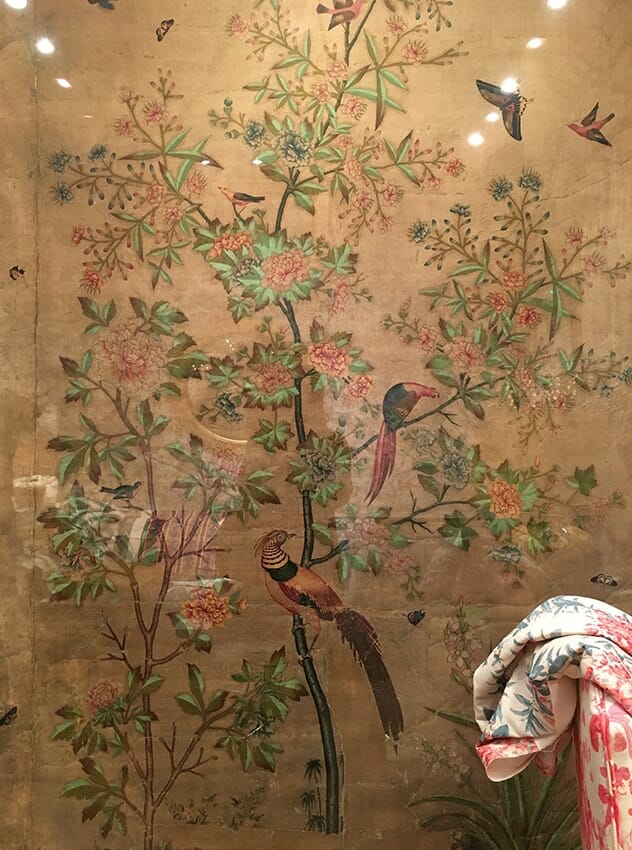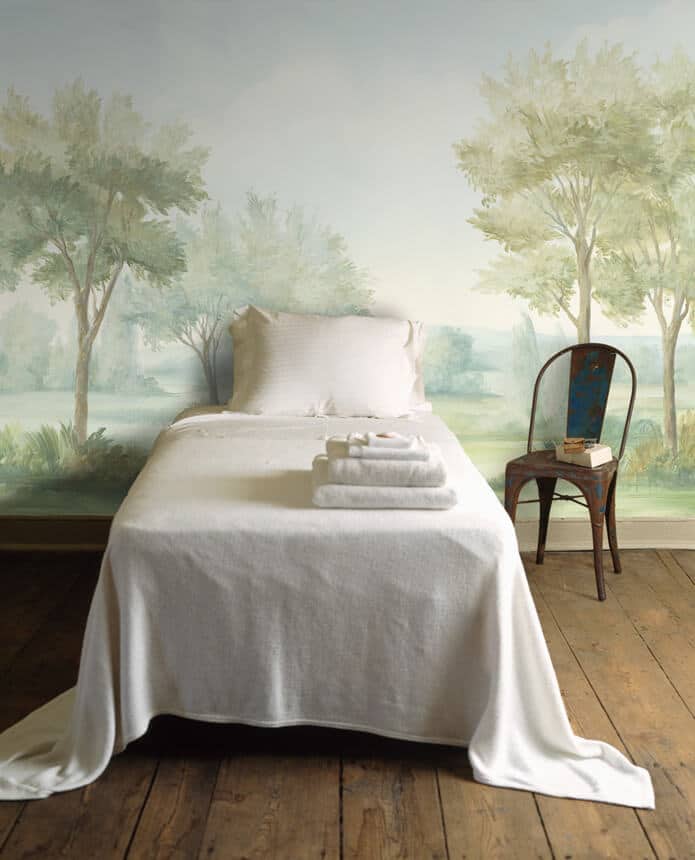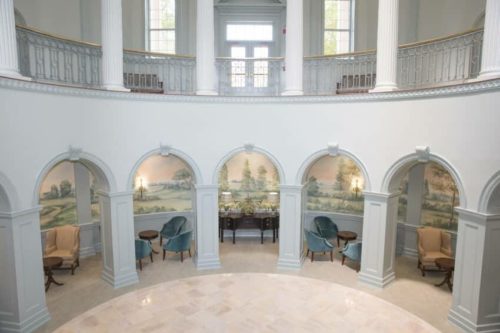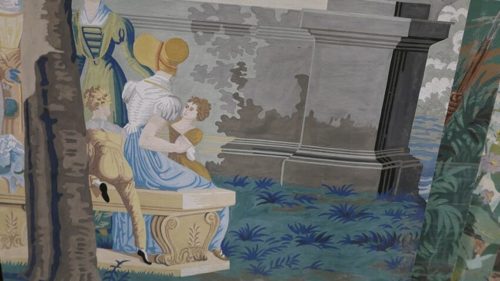A Very Brief History of Decorative Wallpaper

From as early as the 1500s, middle-class Europeans were looking for cheap ways to decorate their home interiors. The ornate woven tapestries adorning the walls of castles and palaces at that time didn’t quite fit your average Frenchman’s modest budget. Paper, however, was quite cheap.
A group of French craftsmen began producing what they called dominos—sheets of decorated paper, roughly a square foot in size. Designs were block printed onto the paper, creating a dark outline which was filled with color by hand using stencils. The result was a bit rough, with colors often bleeding beyond the fine lines. The dominos were initially used to decorate book covers and furniture, but several sheets pasted together made an excellent wall covering.
It wasn’t long before sets of dominos were designed to produce a tapestry effect, rather than a repeating pattern. They frequently depicted a hunting scene or some other aristocratic past-time. But as high-quality, hand-painted wallpapers began arriving from China, Europeans needed to improve their printing process to compete. The Chinese papers were much larger, capable of portraying a single panoramic scene around a room. The English promptly transitioned from single sheets to twelve-yard rolls of paper.
By the 1700s, stencils were replaced with more woodblocks, one for each layer of color. Block by block, colors were added to the wallpaper until the design was complete. The most elaborate designs could require one or two thousand blocks, so errors were incredibly costly. But this method, still employed by French manufacturer Zuber today, allowed for extremely detailed designs and a much cleaner finished product.

Still, Chinese-made wallpapers and other exotic imports were all the rage. Most Europeans couldn’t afford to travel abroad, so they wanted the sights of the far east brought back to them. European designers began developing what became known as chinoiserie. They incorporated the lush, colorful scenes of the Orient into their block printed patterns. Others produced hand-painted landscape wallpapers with Western themes, which were later emulated by printers when popular taste shifted toward the neoclassical.
The popularity of panoramic landscape painting exploded the following century, and with it, the production of panoramic wallpapers, or “scenics.” Sprawling views from around the world were painstakingly rendered in magnificent detail with the block printing process. The mountain villages of Switzerland, the gardens of Paris, and the great Niagara Falls all found their way into European and American estates. These luxury wallpapers were a far cry from the humble domino of the sixteenth century.
Machine printed wallpaper dominated the middle-class market throughout the 1900s and into the present, but most luxury firms remained dedicated to traditional methods. These techniques require skilled artists and a great deal of time. Today, Susan Harter draws on those traditions by beginning with a hand-painted mural then utilizing the most advanced printing technologies to reproduce it on museum-quality canvas.



